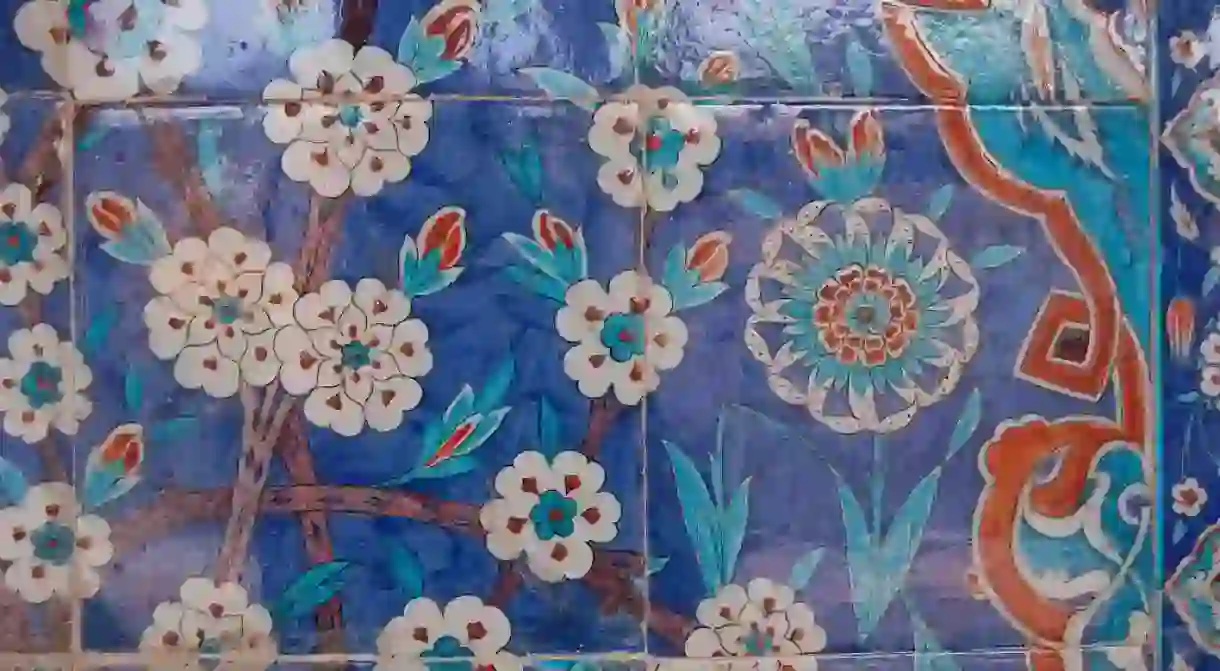A History Of İznik Tiles In Turkey In 1 Minute

With its roots in the Seljuk empire and a development that spans centuries, the traditional art of İznik (a town located in the province of Bursa, Turkey) tiles had its heyday during the Ottoman empire. So what makes these iconic tiles decorated with turquoise and red tulip patterns so popular and such a stunning sight in the interior of historic mosques all over Istanbul? Here we take a look at the story of the hand painted İznik tiles.
The roots of Turkish tiles and ceramics dates all the way back to the 8th and 9th century Uyghurs, its influence traveling through Anatolia with the Seljuks. However, it was not until the Ottoman Empire that the art of hand-painted tiles rose to a new period altogether. The town of İznik was the most active center (hence the name ‘İznik Tiles’) a technically advanced area that received designs from Ottoman court artists to be realized and then sent back to the palace.
Influenced by the 15th century Ming porcelains, early tile examples were very different from the style that later made İznik potters famous. It was not until the middle of the 16th century that the now iconic tulips, roses, pomegranates, and hyacinths began to appear in the motifs alongside the cobalt blue and turquoise patterns. It was also during this time that production shifted to architectural tiles because of the numerous building projects commissioned by Süleyman I (1520-1566) whose reign represented the empire’s peak. A myriad of examples, from tombs to mosques, were decorated with İznik tiles.

The beautiful tiles from İznik appeared in the Süleymaniye Mosque (1557), the Tomb of Hürrem Sultan (1558), the Mosque of Rüştem Paşa (1561), the Tomb of Süleyman I (1566), the Mosque of Sokullu Mehmed Paşa (1572), the Mosque of Piyale Paşa (1573), and the Valide Atik Mosque (1583), to name just a few.
As buildings sprouted and tile production reached its peak, the motifs also shifted to a more naturalistic and free hand style, where tulips, carnations, hyacinths, roses, spring blossoms, lilies, cypress trees, and clusters of grapes and vine leaves appeared in relaxed and experimental compositions, rich in their overall visual spectacle.
In the middle of the 17th century, the Ottoman Empire’s economic distress and political upheavals inevitably affected the İznik potters as their products began to lose their vitality. By the 18th century the İznik ceramic industry almost died out completely with Kütahya replacing it as the leading center. However, the quality and vivacity of İznik tiles were never reached again, even with other examples, such as ceramics from Çanakkale.













